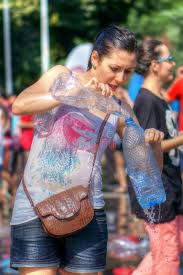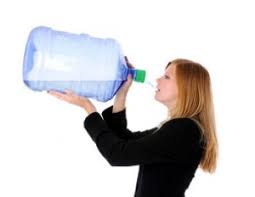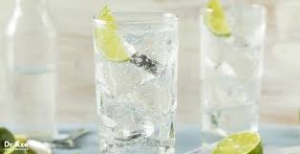Are you sufficiently hydrated? Did anyone else feel a pang of thirst after just reading that sentence? Just me? Okay, well excuse me while I grab a quick sip of water.
Okay, I’m back. Today I’ll cover all you need to know about why staying hydrated is important, how much water you need, and some creative ways to get mo’ water in your life!
I know I don’t need to tell you why water is important, but here are a few key reasons according to The Mayo Clinic and the Centers for Disease Control and Prevention (CDC) (1, 2):
- Optimal function of body systems
- Healthy digestion and removal of waste
- Avoiding dehydration (um…duh!)
- Regulate body temperature (SUPER important in our hot, humid climate!)
- Lubricate and cushion joints
- Protects spinal cord and other sensitive tissues
How much do I need?
The general guidelines that we’ve all heard range from a blanket suggestion of 8 8-ounce glasses of water a day to half your body weight in ounces (for example, a 150 pound woman would aim for 75 ounces). In general, it’s best to monitor how you’re feeling and the color of your urine to determine whether or not you’re sufficiently hydrated. Ideally, your urine will be clear, pale, and light yellow. These are good starting points for #hydrationgoals, but here are some factors to consider that might influence how much water your body needs according to The Mayo Clinic and the CDC (1, 2):
Exercise: You’ll generally need an additional 1.5 to 2.5 cups of water to replenish fluids lost during exercise. More for intense and/or outdoor exercise!
Environment: For those of us living in hot and humid climates (sound familiar, Houston?), we’ll need extra fluids due to a loss of fluid during a hot steamy day (thanks a lot, sweat!). Very dry climates (or when a heater is running in the winter) can also lead to a loss of water, so extra hydration is needed in those conditions as well.
Illness or health conditions: Examples include diarrhea, vomiting, UTIs, and fever. Your mom was right when she told you to drink plenty of fluids every time you got sick! On the other hand, conditions such as heart failure and certain types of kidney, liver, and adrenal disease may require you to limit your fluid intake. Follow your doctor’s guidelines for those cases.
Pregnancy or breastfeeding: The Institutes of Medicine (IOM) recommend that women who are pregnant drink 10 cups of fluids per day while women who are breastfeeding need about 13 cups of fluids per day.
What counts as fluid? In other words: Can I hydrate with coffee and wine?
Technically, coffee and wine do count toward your fluid intake, but do I really need to explain why these are not wise choices for your main source of hydration? Come on, now.
Instead, here are some great ways to stay hydrated on these sunny, hot summer days:
Make your own sparkling water beverage. Use a flavored sparkling water (look out for added sugar- there are plenty of brands that only use natural flavors without sugars) or unflavored sparkling water and add some fresh or frozen berries or a lime wedge for some extra flavor! If you’re at a social outing and would like to indulge in some wine, you can cut your wine intake in half by adding a flavored sparkling water. Try white wine with white grape sparkling water- it’s refreshing!
Eat water-dense fruits and veggies. Did you know that food intake can provide up to 20% of your fluid intake? It’s harder to measure than a cup of water, but there’s one more reason to enjoy some of the fruits of the summer (melon, berries, etc.) and veggies, too!
Keep water on hand at all times. Carry a fun cup or bottle with you to the office, the beach, the airport, and in the car! Glass or stainless steel bottles will keep your water from tasting plastic-y and gross if you’re in the heat, plus the stainless steel containers will keep it ice cold! Plus, if you know how many ounces your container holds, it’s so much easier to track your water intake.
Drink a glass of water with each meal or near a mealtime. Creating this habit can ensure that you at least get 3 glasses of water throughout the day. Just be sure to supplement with water between meals, too!
Make a smoothie with spinach, berries, and coconut water. Hydrating, nourishing, and delicious!
Try flavored water. Hate drinking plain water, but not into the sparkling water? Try out some of the flavor options like Mio or Hint water. These can provide a nice hint of flavor without unwanted calories.
It’s your turn: Apply what you’ve learned!
- Choose a fluid intake goal. Shooting for half your weight in ounces? 8 glasses a day? Pick one that seems right for you and try it out.
- Figure out how much water you are currently drinking. Over the course of 1-3 days, tally up your water intake each day to get a general idea of your starting point.
- Determine how much more water you’ll need to drink in order to reach your fluid intake goal. If you would like to drink 75 ounces of water/day, and you currently only drink about 40 ounces, you’ll need to figure out how to add 35 more ounces throughout your day.
- This is where you can look over some of the suggestions for how to get your fluids and see if any of them would work for your current situation. Don’t tell me you’ll just fill in the gap with wine *eye roll*.
- Start by adding 1 extra cup of water each day and commit to doing that for a week. Using our example above, you’ll go from 40 ounces/day to 48 ounces/day for the first week. Only add another glass when you’ve consistently met your water goal for the week.
- Continue until you’ve reached your goal and work on maintenance!
- Remember to monitor the color of your urine to make sure that your hydration needs are met! If you find that you’re having to get up a million times in the middle of the night to use the restroom, try cutting off your fluid intake 2-4 hours before bedtime and see if that helps!
Reference Articles:
- The Mayo Clinic. http://www.mayoclinic.org/healthy-lifestyle/nutrition-and-healthy-eating/in-depth/water/art-20044256?pg=1
- Centers for Disease Control and Prevention, CDC. https://www.cdc.gov/healthywater/drinking/nutrition/index.html





Leave A Comment